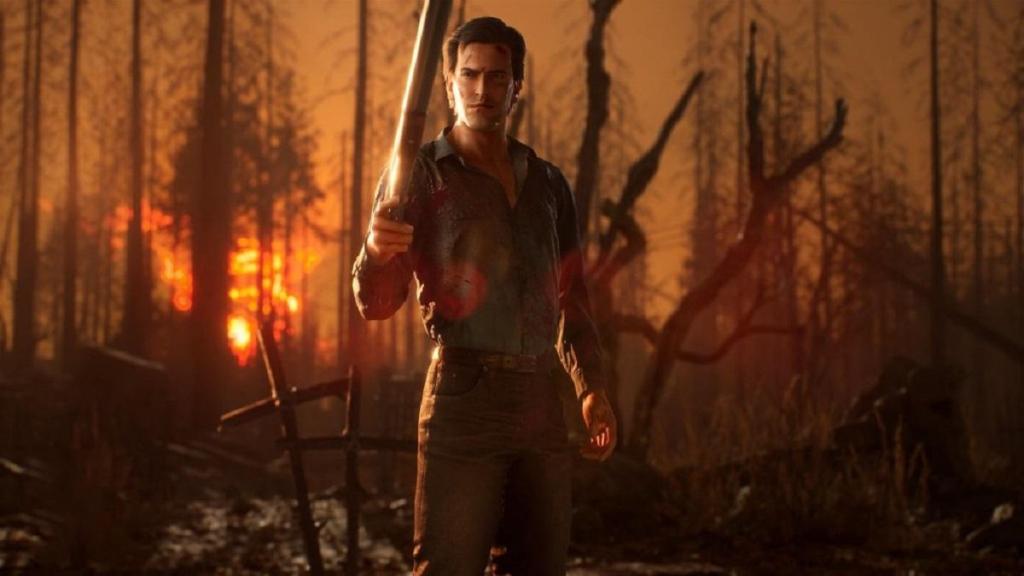As the asymmetrical multiplayer genre grows, horror continues to be the prime orchard to pick from. From Friday the 13th and Predator to Ghostbusters and The Texas Chain Saw Massacre, these games are so plentiful now that when you consider their frequency with the iffy nature of movie-to-game adaptations, there’s reason to be skeptical of any new release. That’s why it’s so surprising, then, that Evil Dead: The Game turned out to be not just a competent asymmetrical game but a thoroughly enjoyable one, too.
Videos by ComicBook.com
For those unfamiliar with this type of game, “asymmetric” simply means that the teams are not only uneven in this case but also that the two teams at play have vastly different resources at their disposal. One party plays as the Kandarian Demon and utilizes portals, traps, and other abilities to spawn and control Deadites while spooking and killing survivors. The survivors, on the other hand, play as a four-person team that must scrounge for weapons and Shemp’s Cola to complete objectives that banish the demon before a timer runs out.
Zipping around the map while possessing trees and survivors and laying traps naturally sounds like more fun than playing as a human, and in most other games built in this 4v1 style or similar formats, that’s true. However, Evil Dead: The Game firstly stands out by actually making the survivor team into a formidable, impactful force to be reckoned with.

It accomplishes this by pulling from different Evil Dead films and spinoffs with multiple characters (and plenty of Ash Williams variants) divided into different classes and possessing unique abilities. Sure, some are obviously more powerful than others that’ll likely need balance adjustments, but each survivor can pick up an axe and lop off a Deadite’s head no matter what their specialty is. Survivors aren’t exactly tanky, but they’re no slouches either, and even the most hectic fights seem winnable with a bit of coordination.
That’s not to say the demon isn’t a trip to play as either, but its goals require a bit more luck and planning compared to those of the survivors. When the game first launched, survivors tried to plan their actions while the demon had one goal to achieve: kill the other team. The one-person demon team could thrive in this chaos, but as survivors got more organized, the demon’s job got harder. Demons have to manage their energy levels and level up abilities all while the demonic narrator yells about the survivors completing another objective. The ceiling for more rewarding moments seems much higher for the demons, but so is the pressure to make the game enjoyable for everyone.
Again, that’s not a problem unique to Evil Dead: The Game. Asymmetric games, by design, have one team that’s probably going to feel stronger than the other, and in this case, it just so happens to be the survivors. It feels unreasonable to expect Saber Interactive to solve this problem where no other game has gotten its balance exactly right (can you even do that in an asymmetrical game?) but it’s not so far off the mark that it dissuades players from picking one side or the other given that there are multiple avenues to victory based on your playstyle.
Another win for Evil Dead: The Game is that it’s one of the few adaptations that’s actually made me want to revisit the source material. After being familiar with The Evil Dead but not so much the other spinoffs and sequels the game pulls from, Evil Dead: The Game, with its single-player challenges and its robust cast of characters, channels well the atmosphere and campiness of the Evil Dead series. An unmistakable factor of that success is the fact that Bruce Campbell himself returned to voice his many Ash variants, but even if you don’t play as them, Jim Pirri as Professor Knowby offers a superb narration for every survivor team.
Evil Dead: The Game does make some questionable decisions as far as basic expectations for game features and systems go, however. The super sway on the demon’s camera when in spirit form is a nice nod to the source material, but it doesn’t translate well to gameplay and is often more frustrating than entertaining. Having to stop movement completely to pull up a map or the communication wheel in a game as hectic as this is a total blunder, too, one that’s bewildering enough that it’ll hopefully be rectified in a future update. The game pretty clearly takes inspiration from Dead by Daylight’s Bloodpoint progression system, too, yet found a way to complicate it perhaps unnecessarily with character-specific skill trees.
Despite its jagged, toothy edges, Evil Dead: The Game remains one of the more pleasant surprises of this year so far. Gripes are pushed to the background when you possess a survivor and use them against their team or rend a Deadite to bits with a chainsaw and even with some movement hang-ups on both teams, every match plays out relatively smoothly. If Saber Interactive keeps up with community feedback and delivers more DLC down the line, Evil Dead: The Game could solidify itself as one of the truly great asymmetrical horror experiences.
Rating: 4 out of 5
Evil Dead: The Game was reviewed on the PlayStation 5 with a review copy provided by the publisher. Evil Dead: The Game is out now.








